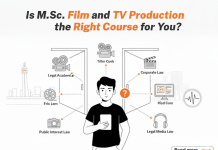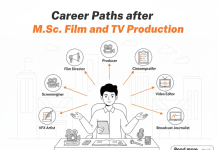“Utterly Butterly Delicious” — Ring a bell?
Of course! It’s not a line; it’s legacy.
Amul didn’t just sell butter — it sold its story with charming mascot, filled with unforgettable wit which woo away the entire world and sparked conversations.
Soft skills training often begins with mastering the ability to tell stories that resonate.
Ever thought, will people remember your message the same way they remember great ads?
Ever been in a situation or in a meeting where you wanted to keep your point…… but, no one listened… moreover no one really cared?
Ever been in a situation where you shared your idea, but, there were blank stares, polite nods or worse- complete silence?
You are not alone. We have all gone through the same at one or the other point of our lives.
Communication skills development becomes critical when you’re trying to get your point across in a distracted world.
Do you know, what this world is called?
Welcome to the world of “Blah.”
The difference between Blah and Aha is something everyone is struggling to find or I should say they are wasting their time in tossing between the two.
Result, sometimes embarrassed or sometimes just clueless about what went wrong.
It’s when your message is technically right—but emotionally flat.
Must-have soft skills like empathy, storytelling, and confidence are what bridge that emotional gap.
But I have a good news, there’s a way out, to come out of this.
The harsh truth is that in the world of Instagram and 30 second reels people care more about the impressions on their post rather than the physical reactions they are giving to each other.
Everyone is busy in increasing the number of likes on their posts, and no one really cares that if they are liking people in real life or not.
Result is, social barrier being created.
People only love stories, yes definitely the Instagram ones.
So what do you think can increase the attention of the individual while listening to you.
If you haven’t guessed it till now, let me clear it.
The truth is — in today’s world of endless scrolling, rapid pitches, and Zoom fatigue — facts alone don’t make people care.
Stories do.
Selling with soft skills is the art of using emotion and authenticity to connect and convert.
From being ignored in a boardroom to leading with impact in a classroom, the difference between “blah” and “aha” often comes down to how you frame your message.
Welcome to the power of storytelling — the soft skill that sells.
Why Storytelling Matters in Business
As they say, selling is an art and not everyone is an artist.
Think of the last boring presentation you sat through. Maybe it had bullet points, data charts, and… that’s about it. You nodded, maybe yawned, and soon forgot everything.
Now think of a TED Talk you remember — chances are, it started with a story. A personal moment. A struggle. A spark.
In business, stories do what stats can’t:
They make people care.
When you tell a story, your audience leans in. Whether it’s a pitch to investors, a sales presentation, a college fest proposal, or even your resume — stories help your message stick.
The Science Behind It
Research shows that stories light up multiple areas of the brain — not just the language centers, but also those tied to emotion, memory, and empathy. This means people are more likely to:
- Understand your point,
- Remember what you said,
- Feel connected to your message.
This is what turns “Blah” into “Aha.”
How Students Can Master Storytelling
- Start With “Why”
Before you write or speak, ask yourself: Why does this matter to me? Why should others care?
Clarity here brings energy to your story.
- Structure It Like a Movie
- Beginning: Set the scene (Who? Where? What’s the problem?)
- Middle: Show the struggle, the learning curve.
- End: Deliver the outcome, the lesson, or the punchline.
This 3-act formula works everywhere — from your cover letter to your college fest speech.
- Make It Personal
People may forget facts, but they rarely forget feelings.
Talk about your real experiences — failures, doubts, breakthroughs. That’s your unique edge.
- Practice the Pitch
Use college clubs, competitions, and classroom presentations to practice. Storytelling, like any other skill, improves with usage.
Where You Can Use This Skill
- In interviews: Frame your answer to “Tell me about yourself” as a mini-story.
- In class presentations: Begin with a question, a personal insight, or a relatable hook.
- In resumes and LinkedIn bios: Narrate your journey, not just list roles.
Quick Student Activity: “Blah to Aha” Challenge
Take one boring sentence and rewrite it as a story.
Blah: I managed a college fest.
Aha: Three months. Zero budget. One cracked projector. But we still pulled off the most viral event of the year — and yes, my inbox still gets “When’s the next one?” messages.
Try it with your own experience!
Call to Action: Start Small, Speak Big
You don’t have to be a novelist. You just need to be real, relevant, and relatable.
Because in a world full of noise, it’s not the loudest voice that wins —
It’s the one with the most unforgettable story.













![Is B.Tech. Chemical Engineering [Lateral Entry] the Right Course for You? Is B.Tech. Chemical Engineering [Lateral Entry] the Right Course for You](https://www.lpu.in/blog/wp-content/uploads/2025/11/Is-B.Tech_.-Chemical-Engineering-Lateral-Entry-the-Right-Course-for-You-100x70.png)
